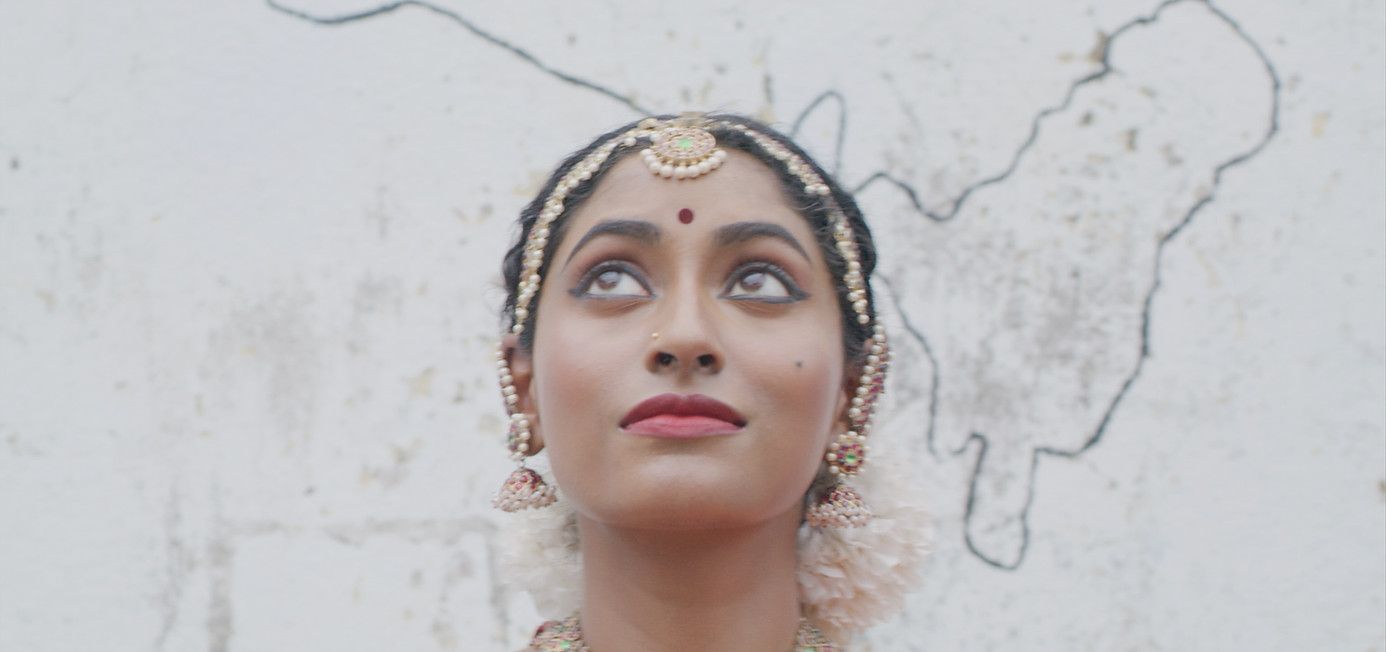
We Hold on to What we Can

Sem Mann a 3 hour bilingual (Tamil and English) Immersive dance theatre production that unravels the inspiring journey of, a Bharathanatyam Dancer from the Tamil diaspora, Kalaivaani Gunasekaran (Kala) who looks back on a poignant year in Madras, India, in 1989, when love transformed her life and fuelled her unwavering fight against genocide.
Through the fusion of live theatre, cinematic visuals, and vibrant dance, the audience is taken through a journey from fragmentation to unity—a theme at the heart of the migrant experience. The work explores the profound connections between displacement, art, and identity, shedding light on the unique struggles and resilience of migrant communities. This immersive experience draws both artists and audiences into a shared space, where they can connect deeply with the narrative and emotions, bridging worlds and creating a dynamic dialogue between the stage and the screen.
Synopsis
Structure

A Theatrical creation brought to life by an ensemble of over 140 cast and crew members, on stage and screen, from Australia, India, Canada, USA, Sri Lanka, Germany and France telling the poignant story of Tamil identity, language and art as a tool against genocide

An Ode to
Tamil Art Dance and the Displaced
Art has the power to shape civilizations and preserve legacies, as seen through figures like Raja Raja Chola or Shah Jahan, whose monumental works ensure their stories endure. This realization drives my own art , where I aim to give visibility through story telling to the invisible—those whose voices are often overlooked.
One such story is Sem Mann, a tribute to the resilience of the Sri Lankan Tamil community and the sanctuary Madras offered after the 1983 riots. It reflects the struggles of the Tamil diaspora to preserve their identity, where art and the Tamil language became essential tools for survival in the absence of a homeland. Through Sem Mann, I share my personal experience with displacement and the role of art in maintaining cultural identity during times of upheaval.
The cultural richness of 1980s Madras, especially its cinema and music, profoundly impacted the Tamil diaspora. Tamil cinema, alongside the influence of Illayaraja’s music, played a key role in preserving Tamil identity in diaspora communities. Bharatanatyam, often featured in these films, also became a vital part of cultural survival. Through Sem Mann, I aim to honour this influence while highlighting the role of cinema in shaping the practice of Indian classical dance.
Although these are vital elements to my identity, growing up as a migrant in Australia, I faced pressure to conform to Western standards, with my Tamil culture often regarded as shameful. Sem Mann represents my personal decolonization journey, embracing my ethnicity without shame. By telling this story in Tamil and incorporating elements of 1980s cinema, I present my art in its most authentic form, proud to celebrate Tamil culture.



